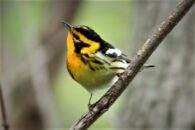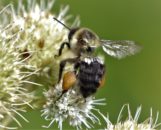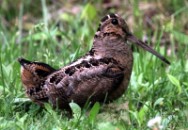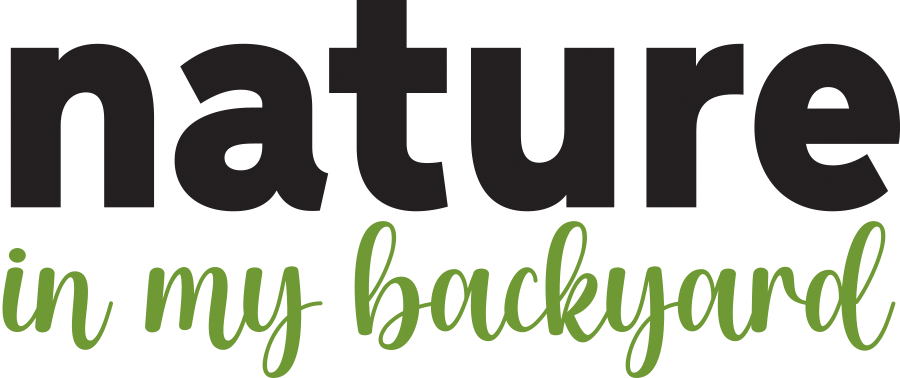Topics Available from Our Speaker’s Bureau (as of 5/8/2022)
Owls of Ohio: 12 species of owls have been spotted in Ohio. Several are residents, some are migrants and a few are accidental visitors. Interesting owl trivia will be revealed. Some tips on how, when and where to spot owls will be shared. (This is a power point presentation and no live owls will be exhibited)
Don’t Touch That Nest (or can you)!: Did you know that you may be breaking a federal law by disturbing nesting birds or possessing a feather or egg collection? Learn about the Migratory Bird Treaty Act of 1916 and how it is intertwined with the beginning of the National Audubon Society.

Eastern US Beauty
Chagrin River IBA: The National Audubon Society has identified the Chagrin River Valley and its tributaries as an Important Bird Area (IBA). Learn why this area is of such interest and what threats it has to withstand. See what wildlife and native plant life share this rich habitat and how you can help protect this treasure.
Birds of NE Ohio: Over 200 species of birds can be found in NE Ohio in a typical year. Some are year-round residents and others just pass through on their way to the Boreal Forests of Canada. Others fly across the Gulf of Mexico non-stop to have their babies in our back yards! Get a close up look at 100 of the most common residents, migrants and breeding birds of NE Ohio and learn where and when to find them. Approximately 1 hour in length.
Warbler Warm-up: Some of the prettiest birds on the planet are in NE Ohio from April through October. Most just pass through during May on their way north, but some stay here to have their babies. Because we only see them for a short time every year we forget how to quickly identify them. This presentation uses actual photographs to help group birds by appearance AND preferred habitat. See all the warblers with eye rings on one slide. Learn about behaviors like tail wagging, skulking on the ground and walking along branches to help narrow down choices. You will learn to appreciate trilling, buzzy and high-pitched songs to narrow down birds you hear but cant see. We even send you home with a list of mnemonics like zay zay zay zoo zee (Black-throated Green Warbler). Approximately 1 – 1 ½ hours in length.
BSA Bird Study Merit Badge for Boy Scouts: An interactive two hour presentation using actual bird photographs to learn and reinforce the concepts found in Requirements 1, 2, 3 & 4 in the Bird Study Merit Badge Book. When presented at the Novak Education Center (Aurora, OH) a 1/2 hour Bird Walk can be added to practice new skills and fulfill parts of requirements 5, 6 & 7. With some pre-planning, Requirement 8 can be done before the program and proof of completion brought to the counselor. Two
BSA approved Merit Badge Counselors are members of Audubon Society of Greater Cleveland.
Extraordinary Adaptations: The Science and Wonder of Migration: The migratory life is more than just an easy trip to the sunny tropics. Migration is a demanding and dangerous endeavor. Learn how migratory birds meet the challenges of life on the move and how scientists are uncovering their extraordinary adaptations.
A Bird’s Eye View: The Sensory World of Birds: Did you know that a bird’s eyesight is more than seven times keener than yours? Birds experience the sights, sounds, and smells of the world in a radically different way than we do. Learn about some of the amazing ways birds make sense of their environment.
Hach Otis and Pleasant Valley: A History: Pleasant Valley from 1830s to present and Hach-Otis from 1942 to present. Pleasant Valley is the area that the Hach-Otis Sanctuary surrounds and sits in. The main branch of the Chagrin River flows through the valley. Lots of nature photos. 48 slides, about 45 to 60 minutes.
Summer Birds of NE Ohio: Did you know that more than 50 species of birds travel hundreds, even thousands, of miles each spring just to raise a family in NE Ohio? One species, the Bobolink, flies 4,500 miles one-way from Paraguay/Uruguay to the hay fields of Geauga and Portage Counties. This one-hour presentation showcases 50 species of “Summer Visitors” through 180 photographs of adult birds, babies, nests and habitats. You will hear songs and calls, some sweet and musical like the Yellow Warbler and others harsh like the Green Heron, and learn many interesting anecdotes about individual species.
Migrating Waterfowl & Winter Birds of NE Ohio – Once the pretty summer songbirds have departed for points south, what do birders do? They put on another layer of cloths and go looking for waterfowl – Ducks, Geese, Swans, Loons, Grebes & Gulls. This presentation showcases these hardy visitors along with Hawks, Owls and smaller birds like Snow Buntings, Larkspurs and Kinglets. If you don’t like cold weather, ask about ‘car birding’, a favorite alternative to walking when wind chills plummet! About 1 hour in length.
eBird 101: Introduction and Getting Started – This presentation uses a live internet connection to show how eBird can make an immediate difference for your birding experience. Learn what birds are being seen at your favorite birding locations or places you’ve never birded. Want to know where a particular specie is being seen in your area? How about viewing pictures others are posting with their checklists? Wondering when the warblers and vireos start returning to your area in the spring? eBird can help you with all this and more. After showing you the most popular features we get you started by creating an account, entering checklists and attaching photos. A detailed 7-page handout is given to every participant to help you be successful immediately. About 1 hour – longer if the group wishes to cover more information.
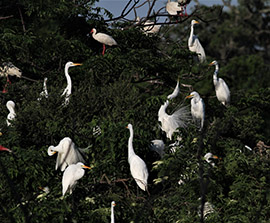
Great Egrets and White Ibis
Wetland Birds of the Eastern US: Wetlands are highly productive ecosystems that support aquatic AND terrestrial plants and animals. They provide nesting habitat for many species in the summer and resting/feeding habitat for migrating waterfowl and passerines in spring and fall. This presentation showcases iconic wetland species like Egrets, Herons, Ibis and Rails along with raptors, waterfowl, warblers and more. There is even a bonus section presenting insects, reptiles, amphibians and mammals that make their homes in wetlands. About 1 hour in length.
Feeding Birds & Others in Your Own Backyard: This 45 minute Power Point presentation is built on over 70 years of bird feeding experience in one location. It contains ideas and information for beginners and tips for established feeders. John Lillich will cover subjects such as feeder locations, types of feeders, what to feed, feeder maintenance and what you can expect to attract. He will tell a few stories and entertain questions as the program goes along.
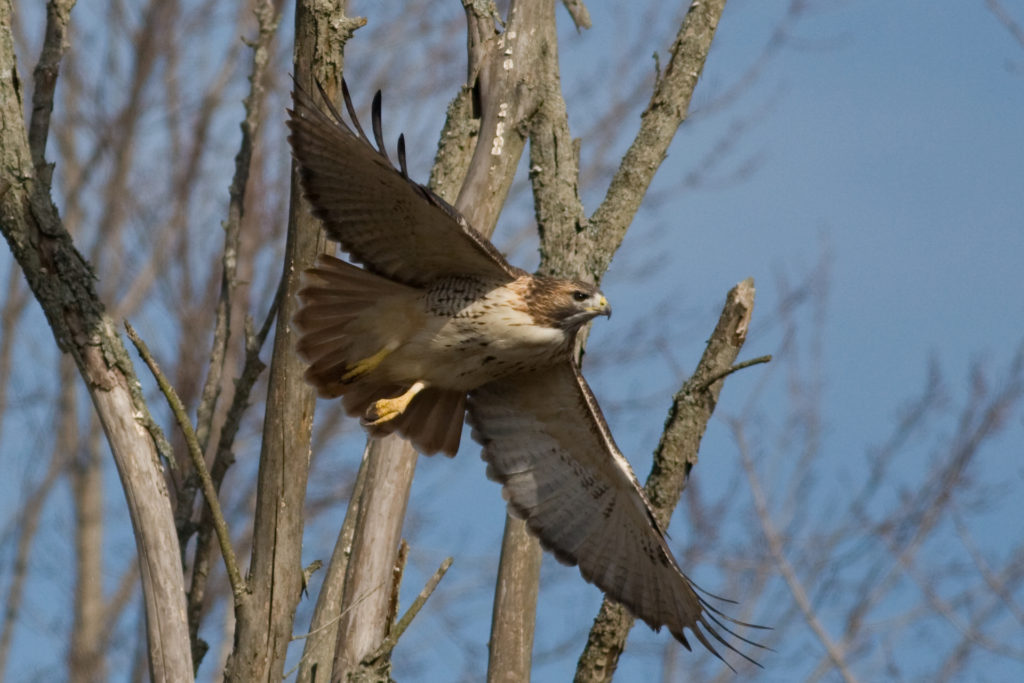
Raptor
Raptors: Raptors are birds that get their food by hunting other birds or mammals. We know them as Eagles, Hawks, Falcons and Owls. Some live here year-round while others visit only during the winter. Enjoy pictures and natural history of the 19 species typically found in NE Ohio throughout the year. About 1 hour in length.
Native Plants for Birds and Insects:
Birds, insects and native plants are inextricably linked in nature. Whatever happens to one will have an effect on the others. This talk explains those relationships, then shows you ways to enhance your personal landscape for birds, insects, or just for the beauty of native plants. Lots of pictures of birds, insects and native plants (flowering plants, trees and shrubs). Directions provided to download handouts from our website. About 1-hour in length.
LBJs – Sparrows and Finches of NE Ohio: Little Brown Jobs! That’s how many of us identify sparrows and finches, mostly because they are LBJs! But each of the 28 species we find in NE Ohio has one or more features to help lead to its identity. Through lots of photographs this program introduces you to these small birds, where to find them, when to expect to see them, and how to separate them from similar species. It’s time to put a name to the face! About 1-hour.
For a printable pdf list of the programs with details, click here.

